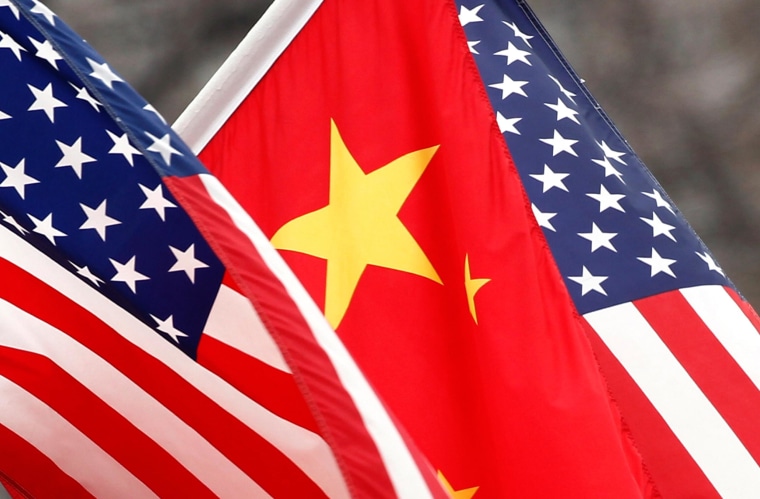BEIJING — A six-day joint exercise between U.S. and Chinese troops is underway, amid a warning to Congress that Beijing's growing military might is posing a serious threat to national security.

The exercise involving 89 U.S. soldiers and 134 counterparts from the Chinese People’s Liberation Army is the first since the election victory of President-elect Donald Trump, who has vowed to rebuild U.S. military strength in the face of China’s assertive policies in Asia.
The drill aims to improve cooperation in rescue operations and involves “live troop exercises,” with U.S. and Chinese soldiers working on disaster relief tasks, such as personnel extraction from debris, according to Chinese and U.S. officials.
It is taking place in southwest China’s mountainous province of Yunnan. A closing ceremony and barbecue party is also scheduled for Friday.
The exercise shows that the U.S. and China “maintain normal contact,” Chinese Foreign Ministry spokesperson Geng Shuang said in response to NBC News questions about the drill. He stressed that “the military relationship is an important part of the bilateral relationship.”
During the election campaign, China was a frequent punching bag for Trump. He accused the Asian powerhouse of being a trade cheat, a currency manipulator and even said China is "raping" America.
“Of course, President-elect Trump has his own views on U.S.-China relations, but the key question is how the leaders of the two countries can manage the relationship between a rising power, China, and an established power, the U.S.,” Jia Xiudong, an international relations expert told state-run China Central Television.
He added that the joint exercise is important for increasing “mutual understanding and trust” between the two militaries.
As president-elect, Trump has taken on a more conciliatory tone. He had a telephone conversation with Chinese President Xi Jinping on Monday.
Trump's office said in a statement early Monday that Trump thanked Xi for his well-wishes on his election.
"During the call, the leaders established a clear sense of mutual respect for one another and President-elect Trump stated that he believes the two leaders will have one of the strongest relationships for both countries moving forward," the statement said.
But aside for the campaign rhetoric there are real tensions between the U.S. and China in the South China Seas.
China claims it has historic rights to the South China Sea, which hosts shipping lanes that are arguably the busiest in the world: $5 trillion in trade passes through the area annually. The Philippines, Taiwan, Vietnam, Malaysia and Brunei all have rival claims to the area.
Related: Let Us Help You Make America Great Again, China Says
In July an international tribunal gave China a stunning rebuke and ruled Beijing has no legal basis to declare historical rights to the South China Seas.
China rejected the entire process of the tribunal from the start and dismissed the outcome as “null and void.” The Hague-based court of arbitration has no powers of enforcement.
China has repeatedly accused the U.S. of stoking tension in the region — the case against China at the Permanent Court of Arbitration had been brought up by the Philippines, a historic U.S. ally in the region.
The U.S. has sought to assert freedom of navigation in the region with frequent military patrols, but denies taking sides in the territorial disputes.
Still, the annual report of the bipartisan U.S.-China Economic and Security Review Commission warned Congress Wednesday of the threat posed by the reform and buildup of China’s People’s Liberation Army.
“China’s pursuit of expeditionary capabilities, coupled with aggressive trends” was compounding concerns about China’s rise in the greater Asia region, the report said.